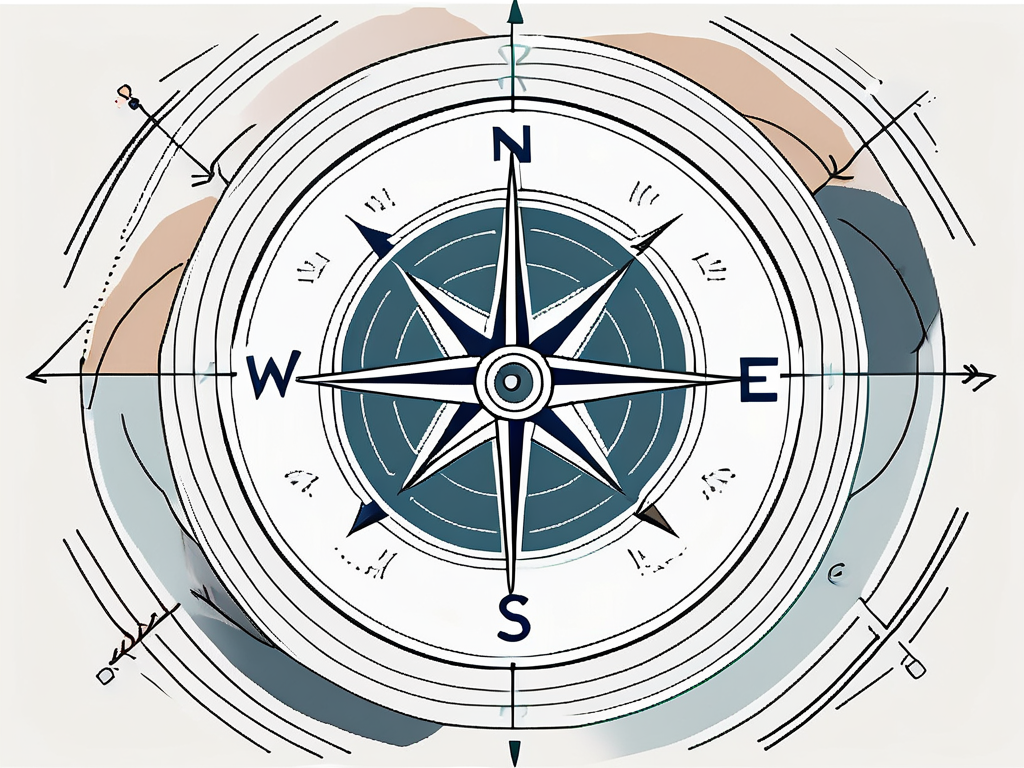Understanding Creative Leadership
To fully grasp the significance of creative leadership, it is vital to first define what it entails. Creative leadership is a style of leadership that emphasizes the cultivation and application of creativity in problem-solving and decision-making processes. It goes beyond conventional approaches by encouraging unconventional thinking, embracing new ideas, and fostering an environment that nurtures innovation.
One key aspect of creative leadership is the ability to inspire and motivate individuals to think outside the box. Creative leaders empower teams to explore new possibilities and challenge existing norms. By fostering a culture of creativity, these leaders create an environment where innovation thrives and breakthroughs occur.
Defining Creative Leadership
Creative leadership encompasses the ability to inspire and motivate individuals to think outside the box. It involves empowering teams to explore new possibilities and challenge existing norms. Rather than dictating solutions, creative leaders encourage collaboration and empower their teams to find innovative ways to solve problems.
Moreover, creative leadership is not limited to a single individual within an organization. It can be cultivated at all levels, from frontline employees to top executives. By encouraging creativity and innovation at every level, organizations can tap into the diverse perspectives and ideas of their workforce, driving continuous improvement and growth.
The Role of Creativity in Leadership
Creativity plays a pivotal role in leadership by enabling leaders to navigate ambiguity and uncertainty. In today's fast-paced and dynamic business environment, traditional leadership approaches often fall short. Creative leaders leverage their innovative thinking to anticipate and adapt to change, fostering agility and resilience within their organizations.
Furthermore, creativity in leadership is not just about coming up with new ideas; it also involves the ability to effectively communicate and implement those ideas. Creative leaders excel in inspiring others to embrace change and take calculated risks. By championing a culture of creativity, these leaders drive organizational growth and success in an ever-evolving marketplace.
The Impact of Creative Leadership on Organizational Success
Creative leadership has a profound impact on organizational success. By encouraging and fostering creativity, leaders unlock the full potential of their teams and drive them towards excellence.
Furthermore, creative leadership goes beyond just encouraging creativity; it involves leading by example. Creative leaders actively participate in brainstorming sessions, idea generation, and problem-solving, demonstrating to their teams the importance of thinking outside the box. This hands-on approach not only motivates team members but also instills a sense of ownership and accountability in the creative process.
Enhancing Team Performance
Creative leaders understand the value of diverse perspectives and ideas. They create an inclusive environment that encourages individuals to share their unique insights and collaborate effectively. This not only boosts team morale but also enhances productivity and performance.
In addition, creative leaders prioritize professional development and skill-building within their teams. They provide opportunities for continuous learning, training, and growth, empowering employees to expand their capabilities and reach their full potential. This investment in skill development not only benefits individual team members but also contributes to the overall success of the organization.

Driving Innovation and Change
Creative leaders are catalysts for innovation and change within their organizations. They recognize that to stay competitive, businesses need to continuously adapt and evolve. By promoting a culture of innovation, creative leaders inspire their teams to develop pioneering solutions, driving organizational growth and success.
Moreover, creative leaders are adept at navigating and leading through periods of change and uncertainty. They remain agile and adaptable, guiding their teams through transitions with clarity and vision. By fostering a culture of resilience and flexibility, creative leaders ensure that their organizations are well-equipped to thrive in dynamic and ever-changing environments.
Characteristics of Creative Leaders
What sets creative leaders apart are specific characteristics that enable them to thrive in the realm of innovation and creativity.
Creative leaders possess a unique ability to inspire and motivate their teams towards achieving groundbreaking results. Their visionary approach to leadership goes beyond traditional management styles, as they prioritize fostering a culture of creativity and innovation within their organizations.
Embracing Diversity of Thought
Creative leaders understand the power of diverse perspectives. They actively seek and embrace perspectives different from their own, recognizing that this diversity of thought fuels innovative thinking and problem-solving. By valuing and leveraging diverse opinions, ideas, and experiences, creative leaders unleash the full potential of their teams.
Furthermore, creative leaders recognize that diversity extends beyond just demographics; it encompasses a wide range of backgrounds, skills, and experiences. By creating an inclusive environment that celebrates these differences, they foster a collaborative atmosphere where unique ideas flourish and lead to groundbreaking innovations.
Encouraging Risk-Taking
Creative leaders create a safe space for experimentation and risk-taking. They understand that failure is an inherent part of the creative process and encourage their teams to learn from mistakes. By fostering a climate of psychological safety, creative leaders cultivate a culture where individuals feel empowered to take calculated risks and explore unconventional solutions.
In addition to encouraging risk-taking, creative leaders also lead by example by taking risks themselves. They understand that demonstrating a willingness to step outside of their comfort zones and try new approaches inspires their teams to do the same. This shared sense of boldness and resilience in the face of uncertainty propels organizations towards greater innovation and success.
Developing Creative Leadership Skills
Creative leadership skills can be developed and honed over time. To foster a culture of creative leadership, organizations need to provide the necessary support and resources to cultivate these skills.
One key aspect of developing creative leadership skills is the emphasis on emotional intelligence. Creative leaders are not only innovative thinkers but also possess a high level of emotional intelligence, allowing them to understand and connect with their team members on a deeper level. By honing emotional intelligence through training and self-awareness exercises, individuals can enhance their ability to lead with empathy and understanding.
Fostering a Creative Mindset
A creative mindset is the foundation of creative leadership. Organizations can foster a creative mindset by encouraging curiosity, open-mindedness, and continuous learning. By providing opportunities for personal and professional growth, organizations empower individuals to develop the mindset necessary for creative leadership.
Furthermore, fostering a creative mindset also involves creating a safe space for experimentation and failure. Creative leaders understand that innovation often comes from taking risks and trying new approaches. By promoting a culture where failure is viewed as a learning opportunity rather than a setback, organizations can encourage individuals to think outside the box and push the boundaries of traditional leadership.

Building a Culture of Innovation
Creative leadership thrives in a culture that embraces and encourages innovation. Organizations can cultivate a culture of innovation by providing resources for experimentation, recognizing and rewarding creativity, and promoting interdisciplinary collaboration. By fostering an environment that embraces new ideas and approaches, organizations empower creative leaders to flourish.
In addition to providing resources for innovation, organizations can also benefit from creating cross-functional teams that bring together individuals with diverse backgrounds and skill sets. By fostering collaboration across departments and disciplines, organizations can leverage the collective creativity and expertise of their team members to drive innovation and problem-solving. This collaborative approach not only enhances the creative leadership skills of individuals but also fosters a culture of teamwork and shared success.
The Challenges of Creative Leadership
While creative leadership presents numerous benefits, it is not without its challenges. Overcoming these obstacles plays a vital role in effectively implementing creative leadership strategies.
One significant challenge faced by creative leaders is the need to inspire and motivate their teams to think outside the box. Encouraging creativity and innovation requires creating a work culture that values experimentation and risk-taking. Leaders must foster an environment where team members feel empowered to share their ideas without fear of judgment, fostering a sense of psychological safety.
Overcoming Resistance to Change
Change can be met with resistance. Creative leaders need to navigate and manage this resistance effectively. By communicating the vision and rationale behind the changes and involving individuals in the decision-making process, leaders can help overcome resistance and gain buy-in from their teams.
Moreover, addressing the emotional aspects of change is crucial. Acknowledging and validating employees' feelings of uncertainty or fear during periods of transition can help build trust and facilitate smoother change management. Creative leaders must demonstrate empathy and actively listen to their team members to address concerns and ensure a successful transition.
Balancing Creativity and Control
Creative leaders must strike a delicate balance between fostering creativity and maintaining control over organizational processes. Too much control can stifle innovation, while too much freedom can lead to chaos. Finding the right balance requires effective communication, setting clear expectations, and providing guidance when necessary.
Furthermore, fostering a culture of experimentation involves embracing failure as a learning opportunity. Creative leaders should encourage their teams to take calculated risks and learn from setbacks. By reframing failures as stepping stones to success, leaders can create a culture that values continuous improvement and resilience in the face of challenges.

In Conclusion
Creative leadership is a crucial aspect of organizational success, particularly in today's rapidly evolving business landscape. By understanding and embracing creative leadership principles, organizations can drive innovation, enhance team performance, and overcome the challenges associated with change. Developing and cultivating creative leadership skills is essential to unlock the full potential of individuals and foster a culture of continuous innovation and growth.
Embrace the transformative power of creative leadership by partnering with the right agencies and service providers to innovate and grow. Refetrust is here to guide you through this pivotal journey. With our extensive database and verified reviews, you can confidently choose partners that align with your creative vision and organizational goals. Accelerate your growth and save valuable time by visiting Refetrust today to find agencies that will help you unlock your full potential and lead with creativity.





